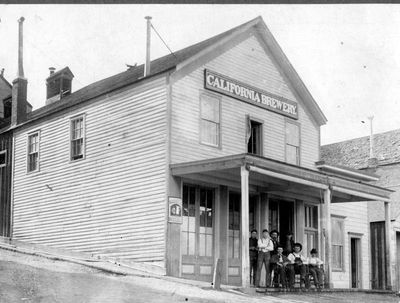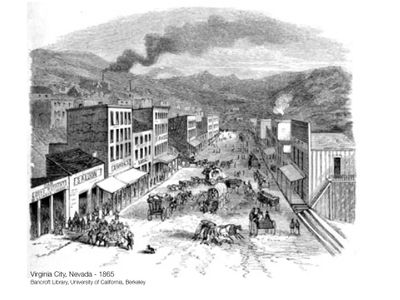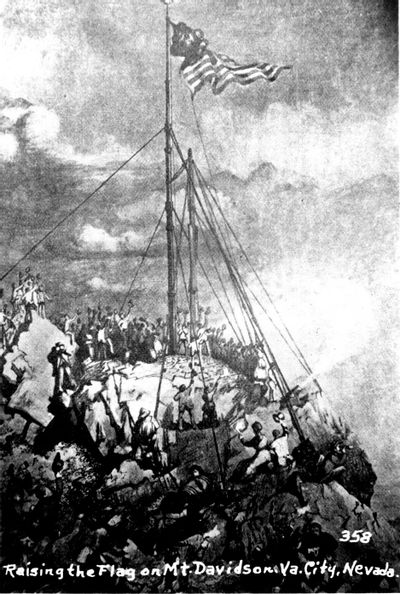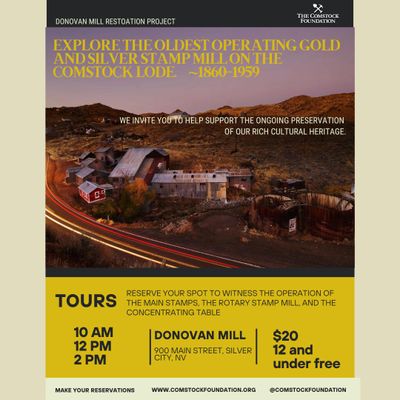C. L. Yearzago, KNOWN TO BE A Keeper of the Tribal Knowledge
#559 THE TAR WORKS (John Bowie 1946 tour of 6 Mile Canyon) May 2025
During a tour of the Comstock in September of 1946 for reporters for the Nevada Magazine Bowie detailed the location of many sites by name and function that had existed in Six Mile Canyon in the 1870s and later. One in particular was what was known as the “tar works”.
John Bowie was a local of the 30’s to the 60’s. He was recognized as a Virginia City old timer that had solid memories of many of the now gone (at that time) structures and businesses due to various means of loss. As Bowie toured the Nevada Magazine reporter down into Six Mile Canyon he pointed out many points of interest that had disappeared prior to this tour date.
One in particular was the “Tar Works”. The September 1946 Nevada Magazine quotes John Bowie regarding the tar works.
“The tar works were next, a level spot on the slope, a dilapidated fence, wire trailing the ground. A thriving business it had been in the old days, where they made tar and extracted cleaning fluid which they sold to the mills in five-gallon cans, five dollars a can. Brush and undergrowth had taken over.”
That is the sum total of all references that I (C.L. Yearzago) have ever come across regarding a “tar works” on the Comstock. That peaked my interest as to the process of “making tar” and what it was used for in the 1870s Comstock workings. So, here we go…..
In the 1800s, tar was primarily made through a process called destructive distillation, where wood, typically pine, (the Comstock had plenty of that) was heated in a low-oxygen environment. This process, also known as "dry distillation," caused the wood to break down, releasing gases and liquids that condensed into tar which was then collected in barrels. They would have used the Pinion Pine trees and stumps which, as you may know, produces a lot of sticky “pine sap”. If you have ever gone pine nut hunting in the fall you well know about sticky pinion pine trees. The result was known as “pine tar”. The by products were turpentine and charcoal. The resulting tar is a viscous, blackish brown thick material. In the 1870s of the Comstock it was likely used in a number of ways. In particular as a preservative for wood. Most of the construction on the Comstock was made of wood.
Also, as Bowie mentioned, the resulting “cleaning fluid” was surely used in the mining operations for any number of cleaning/solvent purposes. Today we still use a pine tar derivative to protect our fences, decks, stairs, etc. and that Turpentine is a good solvent for many needs. It is also used in numerous cosmetics, soaps, and who knows what else it it is in. Note above that Bowie noted they got “cleaning fluid” from the tar works in upper Six Mile Canyon.
Fast forward to the early 2000s when the County built the new sewer plant at the top of Six Mile Canyon. In that process ol’ C.L.Y. and a member of a local old-time family, were called to the construction site where we were shown a several foot square deposit on the ground of an obvious black/dark brownish “tar” or oily type substance. None of us could figure out why it would be there. We gave some thought that maybe in the early 1920’s and 30’s when vehicles, oils, and etc arrived on the Comstock along with at least three garages and gas stations (Shell, Chevron and Arco) came in use that maybe they were discarding their old oils and greases down there in the Canyon. So it was left at that. Even ol’ C.L.Y. had never come across any references to a “tar works” on the Comstock. The State EPA office was consulted and examined the scene and had no input. So, it was decided by the EPA to cover it over with a concrete slab, build the sewer plant over it so there was no public contact and then watch for any migration of the material from that spot.
Hence the Sewer Plant now exists on that spot at the top of Six Mile Canyon.
AND SO…..another Mystery of the Comstock solved. (May, 2025)





